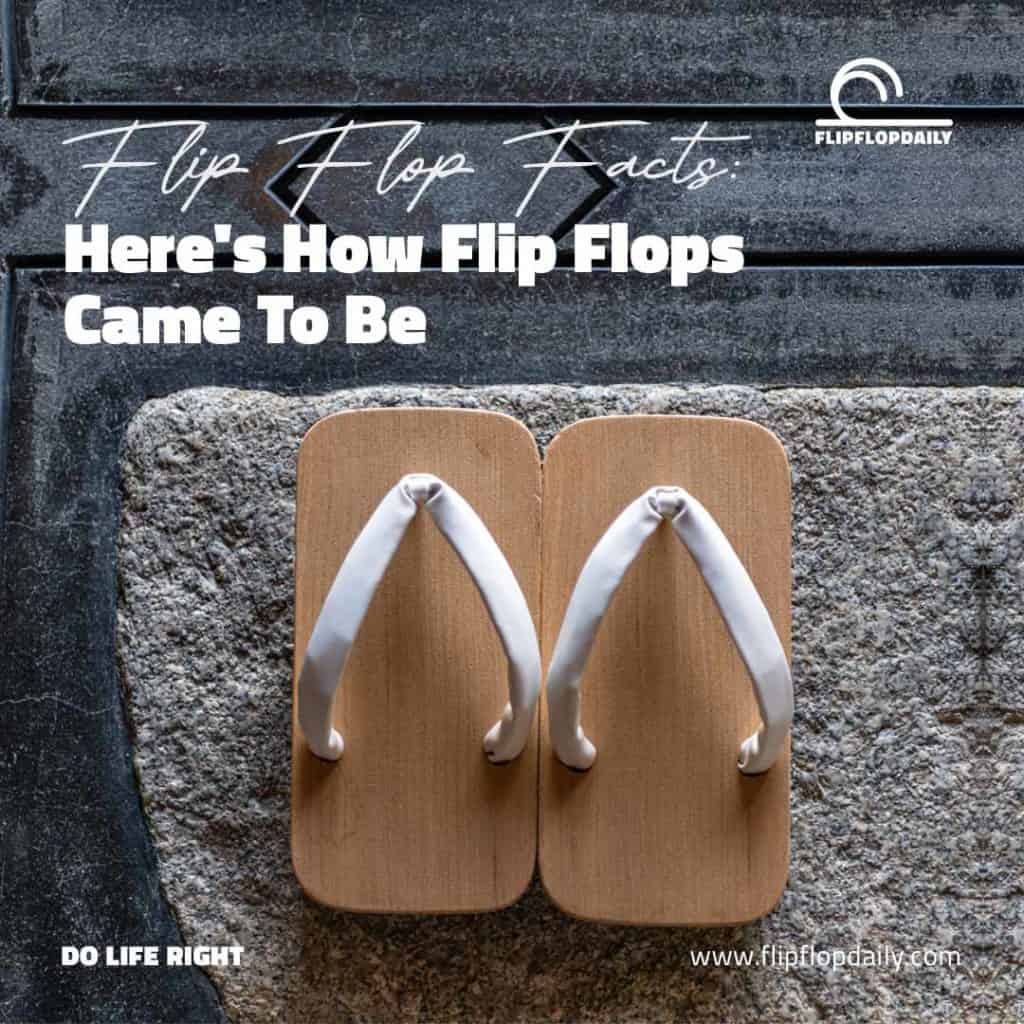Flip flops have been around forever. You can also find them everywhere – from landlocked towns to remote islands.
It got us thinking… how did flip flops come to be?
Rather than bore you with a long, drawn out history of flip flops, we gathered some of the most interesting Flip Flop Facts that reveal how flip flops came to be.
- Flip flops are the most ancient form of footwear
It might surprise you, but flip flops are one of the oldest types of footwear. Murals and artwork dating back to 4,000 B.C. show people wearing sandals as their primary footwear.
Ancient sites on several continents have revealed the existence of “thong footwear” dating back thousands of years. It appears, however, that ancient Egyptians made them famous. Several ancient Egyptian artworks depict flip-flop sandals dating back to 4,000 B.C. The flip flop was made with crude tools in the early days. Researchers found a pair of papyrus leaves pieced together in Europe and dated it to 1,500 years old.
- Flip flops can be made of almost anything!
Flip-flops are made from leather, suede, foam, rubber, plastic, hemp, and more, but did you know they are also made with other unconventional materials abroad?
Papyrus and palm leaves were used in ancient Egypt
Rawhide is used to make flip-flops by the Masai tribe in Africa.
People used rice straw in China and Japan
The yucca plant was used to make flip-flops in Mexico
Flip flops in India were made from wood
South Americans made flip flops with the leaves of the sisal plant
- “Paduka” – wooden footwear in ancient India was an early form of flip flop.
India’s citizens and royalty alike wore flip flops, with the Paduka being one of the most popular styles. Instead of a strap, the foot was held in place by a small peg between the big toe and the second toe. Historically, it has been worn in South Asia and Southeast Asia. Paduka come in a variety of forms and materials. For example, they have been made from wood, ivory, and silver in the shape of real feet or fish. Sometimes, these were elaborately decorated – especially when used by a bride or as part of a religious offering.
- Flip flops have been spread most widely by Asian cultures.
Rice straw and cloth are the most common materials used in Asian flip flops. The Chinese and Japanese made flip flops, each with its own design and characteristics. Pop culture and their popularity have made the Japanese Zori one of the most iconic flip flops around. I mean, Havaianas Zori is still around until today!
- Don’t panic, it’s organic. Flip flops can be made from plants!
In South America and Mexico, flip flops were made from all-natural materials. South American sandals were made from sisal leaves, while Mexican sandals were made from yucca leaves.
- The modern flip flop were first called “jandals”
A large part of the popularity of flip flops today came from World War II. The Japanese Zori sandals were brought home from the Pacific by soldiers fighting in the war. They were originally called ‘jandals,’ from the words ‘Japanese’ and ‘sandal.’ People all over the world immediately fell in love with this comfortable footwear.
On the other side of the world, the Japanese sandals also blew up and went from house slippers to a beach trend by the ’50s.
- Flip flops today
By the 1960s, American companies began manufacturing flip flops in bright colours and comfortable designs. In places like America and Brazil, these flip flops became especially popular. It was not long before California surfers began to favor comfortable, convenient rubber flip flops, and Brazilians started producing them. This is how brands such as Havianas and Rainbows got their start.
Over time, more and more styles and designs have been invented for flip flops. Many vendors produce flip flops made of rubber or plastic, but others use leather. As a result, they are more durable and reliable, and they also have a sense of style. In addition to flip flops being considered casual wear, they can also be worn in more formal settings. We’re in flip flops all the time here at Flip Flop Daily!
- Don’t overthink why it’s called “flip flop”
Do you have a pair around? Put them on. Walk around. What sound do you hear?
Flip… flop… flip… flop…
Sometimes simplicity really is the smartest way to go.
Here are some other names for flip flops from around the world:
- Thongs – Australia
- Tongs – Cambodia
- Dacas – Somalia
- Zori – Japan
- Chinelos – Brazil
- Slops – South Africa
- Vietnamki – Ukraine & Russia
- Djapanki – Bulgaria
- Sayonares – Greece
- Japonki – Poland
- Schalpfen – Germany
Flip flops have come a long way from Ancient Greece to the beach icon they are today. But while much has changed about our favorite sandals, they have always represented comfort, simplicity and no frills – representing Do Life Right.
Today there are so many flip flops that it can make you dizzy. Check out our flip flop reviews and recommendations here on Flip Flop Daily to find the perfect pair of flip flops, thongs, zoris… (or whatever you want to call them) for you.

